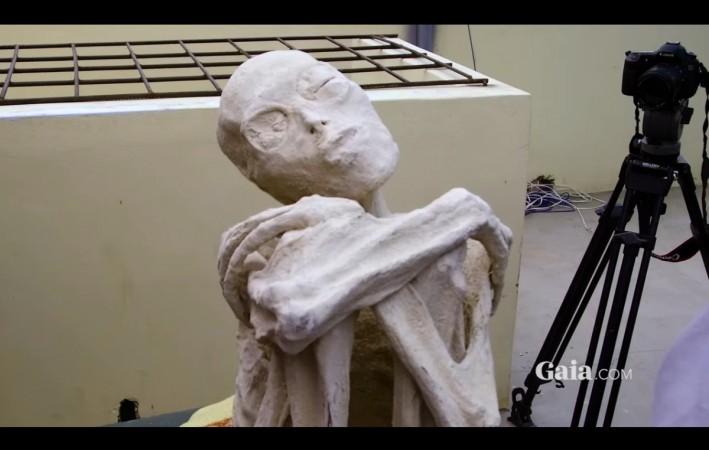
The tissue samples of the mysterious mummy that was found in a tomb near the Nazca Lines in southern Peru in early-2017 was brought to Russia by a team of St. Petersburg geneticists, to break its genome. And, they found that the mummy which appeared to be of a human is not in reality.
The mummy named Maria with an elongated skull and only three fingers and toes date back to about 5th century A.D. After preliminary analysis, it was found that she also has 23 chromosomes just like humans. However, the mummy's rib structure is very different from that of a human being, Sputnik reported. It is keel-shaped in the upper part and the cage consists of semicircular ribs.
Scientists even carefully studied the mummy's internal organs."We clearly see the contours of the trachea and the bronchi, of the heart and its chambers; we can even see the shape of the valves. We can also see quite clearly the contours of the diaphragm, the liver, and the spleen," radiologist Natalia Zaloznaya said.
The scientists have also found out that the white powder used to preserve the dead and mummify it is cadmium chloride – the antibacterial effect of the chemical has kept Maria preserved.
"Right now we are making a detailed analysis to see if the shape of the position of all the chromosomes, of all the amino acids, coincides with ours," Russian National Research University professor Konstantin Korotkov, said.
Apart from Maria, another tiny mummy – Vavita, found in Peru was also analyzed. Researchers say that Vavita was nine months old when she died and Maria was an adult woman, making them believe that they could have been mother and child.
Korotkov said that they have seen four more mummies of 70 centimeters each, whom they called "Verdants." Each of them has two arms, two legs, a head, a pair of eyes and a mouth. They even have mouth cavities but surprisingly, the lower jaws of are not flexible; it is present as a single whole with the rest of the skull.
"Tomographic scans reveal their skeletons. The tissue has biological nature and their chemical composition indicates that they are humans. Their DNA features 23 pairs of chromosomes, just like we have. All the four of them are males, each with a Y-chromosome. They appear human but they are not. Their anatomic structure is different," Korotkov explained.
Korotkov said that it's hard to tell who these "little men" were, but said that it could be extraterrestrials or bio robots.
He added: "As for the 70cm creatures I'm not sure, but Maria and Vavita could have been representatives of a certain race which had possibly reached a stage of advancement much earlier than we did. Maybe thousands of years earlier."

















